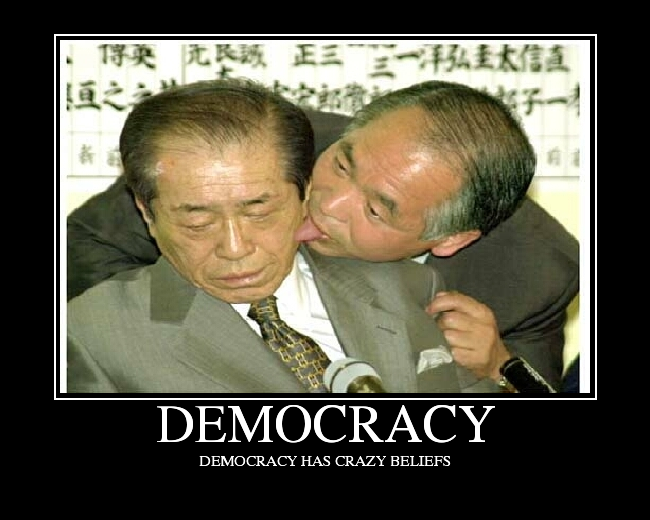Putting the ‘M’ Back in GM
By Kent Wilson
12 years ago
(Another day, another submission in the FN contributor search. Keep things tough but fair in the comments, as per usual folks)
By: Graham Wiswell**
Welcome to August. The initial excitement and anticipation of the offseason is over, and we’re left only to evaluate. The shocking events and head-scratchers (Carter, Richards, Varlamov etc.) of late June and early July have become old news. August is the time to peel back layers, and take a look beneath the surface.
There are components of management in any profession that are essential. For whatever reason, this foundation can be overlooked in the hockey business. Here, we’ll take a look at the fundamental roles of a manager, especially as it pertains to the Calgary Flames.
Doom and Gloom

A spike of success at the outset of Darryl Sutter’s tenure allowed him a free pass. From an outsider’s perspective, the ownership group allowed Darryl to run the hockey team in isolation, while they opted for a “hands off” approach. The team experienced a sudden resurgence under his watch, so while it is easy to make judgments in hindsight, this approach didn’t seem nonsensical at the time.
How would you describe Darryl Sutter to someone unfamiliar? Is he an Assistant Coach? A Head Coach? A General Manager? Or is he simply a former NHL player? Based on the roles he’s filled at the NHL level, you could describe him any which way, but was Darryl Sutter ever qualified to be an NHL General Manager? Perhaps a General in the “yes, sir” form, but by no means is he a manager.
A manager is a leader; creates a vision, empowers people, communicates effectively, hogs the blame and shares the success. A manager hunts down resources and aligns them in specialized roles, to ensure the group reaches its targets. A manager is not the most skilled or knowledgeable specialist, but has the ability to identify the strengths in others, and get all parts moving in one direction in order to achieve success. So, what did that Darryl Sutter guy do again?
Sutter was a knowledgeable hockey specialist, who forced a *win now, forget tomorrow* mentality, which ultimately created a toxic environment for players and executives alike. Regardless of compensation, no one can perform in a toxic environment. Darryl’s hockey moves were made through impulsive decision making and “deficit spending” (a term used by Feaster to describe the previous regime). Once he acquired the assets he wanted, he got the most out of his employees through pressure: succeed now, or leave. Fear of trade or demotion is effective in short stints, but not a mindset conducive to winning. Why can’t any of these “star” players score in Calgary? You try holding onto the puck longer and being creative in a *we’re contenders, don’t screw it up* setting. I would opt to dump-and-chase, too.
I don’t pretend to know what it’s like to be in an NHL organization at any capacity, but tell me this: if you’re a scout, and your GM trades the 1st and/or 2nd rd picks every year, are you not forced to make a safer selection with those 3-7th rd draft picks? What is this constant “deficit spending” telling you about your role within the organization, other than inconsequential? If you’re a coach, how can you run the bench your way, knowing you’re the 3rd coach in 4 years? Results from October to September 2010 would illustrate it is a significant struggle.
It is not far-fetched to suggest this type of environment would damage relationships and create unrest. Not until 6 months before Darryl’s “resignation” did the Flames add an Assistant GM under Sutter’s watch. Until then, there was no one to co-ordinate with or lean on for hockey decisions – just Darryl. The cup champion Boston Bruins were operating with 5 AGMs one year ago. When asked why an AGM wasn’t added before, Ken King responded “Darryl didn’t feel he needed one.” That’s autonomy at its finest. What King should have said is “Darryl doesn’t play well with others.” Could you imagine if all organizational decisions were made this way? “We didn’t sign a back-up goaltender because Kipper felt he didn’t need one.” Yikes.
Feaster’s Participative Democracy

There was a growing sentiment that this team needed a new direction, but it seems unless the Flames employed Jim Nill or Ron Hextall in the GM chair, the hire would be met with harsh criticism. For one, I don’t understand the Ron Hextall chatter. Is it his NHL playing career that draws us to Hextall? If so, have we really done enough homework to suggest he was the best suited AGM for a promotion? As for Nill, that transaction is much easier said than done. We can expect he’s been offered a full-time GM gig in the past. Was he holding out for a job in Calgary all these years? Not likely.
Of course, I wasn’t thrilled with Feaster’s promotion to General Manager, either. I share the same concerns as many of my peers: lack of playing experience, poor drafting record, the Brad Richards deal and so on. Once the job was his, JayFe began to shed light on the type of culture he wanted to create: a consensus-driven, participative democracy. He has since beefed up his hockey operations department in a number of areas, from AGM John Weisbrod to Chris Snow, a former journalist who specializes in statistical analysis and the PUCKS system. The hiring of a resource like Chris Snow is a new direction in and of itself. Feaster never played the game, but continues to add experienced hockey people to what he calls his participative democracy. Is it not more useful to have an effective manager co-ordinate hockey minds, rather than one hockey mind control his old buddies and family members?
Engage and Empower
What makes Ken Holland a world-class NHL GM? If you look at the success of the Detroit Red Wings, it has primarily come from drafting and developing. Scouts are responsible for evaluating young NHL hopefuls and making these selections at the draft, and Holland’s staff in Grand Rapids (AHL) does most of the heavy lifting in terms of day-to-day prospect development. Holland is a bright man, who has the ability to empower key people to carry out these responsibilities. His biggest challenge comes in recruiting personalities that share his vision, and can mesh with his Red Wing culture. Of course, the game is played on the ice, yet the Detroit Red Wings continue to operate as a model of consistency in the NHL. There is no shortage of respect for Ken Holland around the league, but hockey aside, Holland is a world-class manager of people.
So what model would you follow as an NHL GM? If you truly respect the Ken Holland regime, you’ll appreciate Feaster’s aim to direct and empower key people. We’ve already heard “this is Brent’s hiring” and “this is Todd’s draft” from the Flames GM. If knowledgeable professionals are utilized effectively in their own areas of expertise, from pro/amateur scouts to goaltending coaches, a manager’s playing experience will not affect the win column.
Success is a Process

How exactly did Jamie McLennan get the job as Goalie Coach back in June of 2009? His fun personality, and experience as an average NHL back-up? The Flames covered it up with an “Associate Coach” title, but Jamie wasn’t running the power-play or matching lines.
Successful organizations follow an extensive process in order to fill specific roles. It would have been easy for Feaster to hire his former AGM Bill Barber to fill that void in Calgary, or to hire Marc Denis as the goaltending coach. He could have hired his entire staff from Tampa to run the Flames, but resisted the temptation to fill the gaps with familiar faces and old buddies. There was a process carried out in order to find the *right* people to assume these roles. The day Feaster was appointed GM, Ken King noted they were “close” to naming an AGM, and “would have liked to package that announcement with today’s news.” It took nearly two additional months for the hiring to take place. You could argue this was a result of the playoffs, but did anyone have John Weisbrod on their radar? What about Clint Malarchuk to work with the goalies? There were no personal ties or old friendships attributed to these hires. A formal interview process was held, a course of action carried out, and these gentlemen were not only deemed the best fit, but the right fit.
The same is true with the on-ice product. You can criticize the number of depth signings on defence, the Regehr trade or the signing of a 37-year old Brendan Morrison, but you can’t argue that all of these decisions were made with a timeline in mind, an eye on the big picture. Winning is not as simple as big names on the free agent market and a season of puck luck. Winning is a process, a culture. Evidently, there’s an interest in being competitive today, but most of all, a priority to create flexibility in the not-so-distant future. Any sustained success follows a process, and aims to develop in a perpetual state of re-building. Scorched earth, full-scale rebuilds in the NHL do not happen by choice. Successful teams evolve and develop on the go, by gradually replacing veterans with younger alternatives. This summer in Calgary, we’ve seen baby steps in that transition.
While the Flames were not stealing headlines this summer, I would argue there have been significant shifts below the surface. Tangible change won’t take shape within weeks, or perhaps even years, but at least now the wheels are in motion.
**Graham is a 4th year student at Mount Royal University. He currently blogs on his own site Dome Ice Advantage.
survey tools
Recent articles from Kent Wilson





